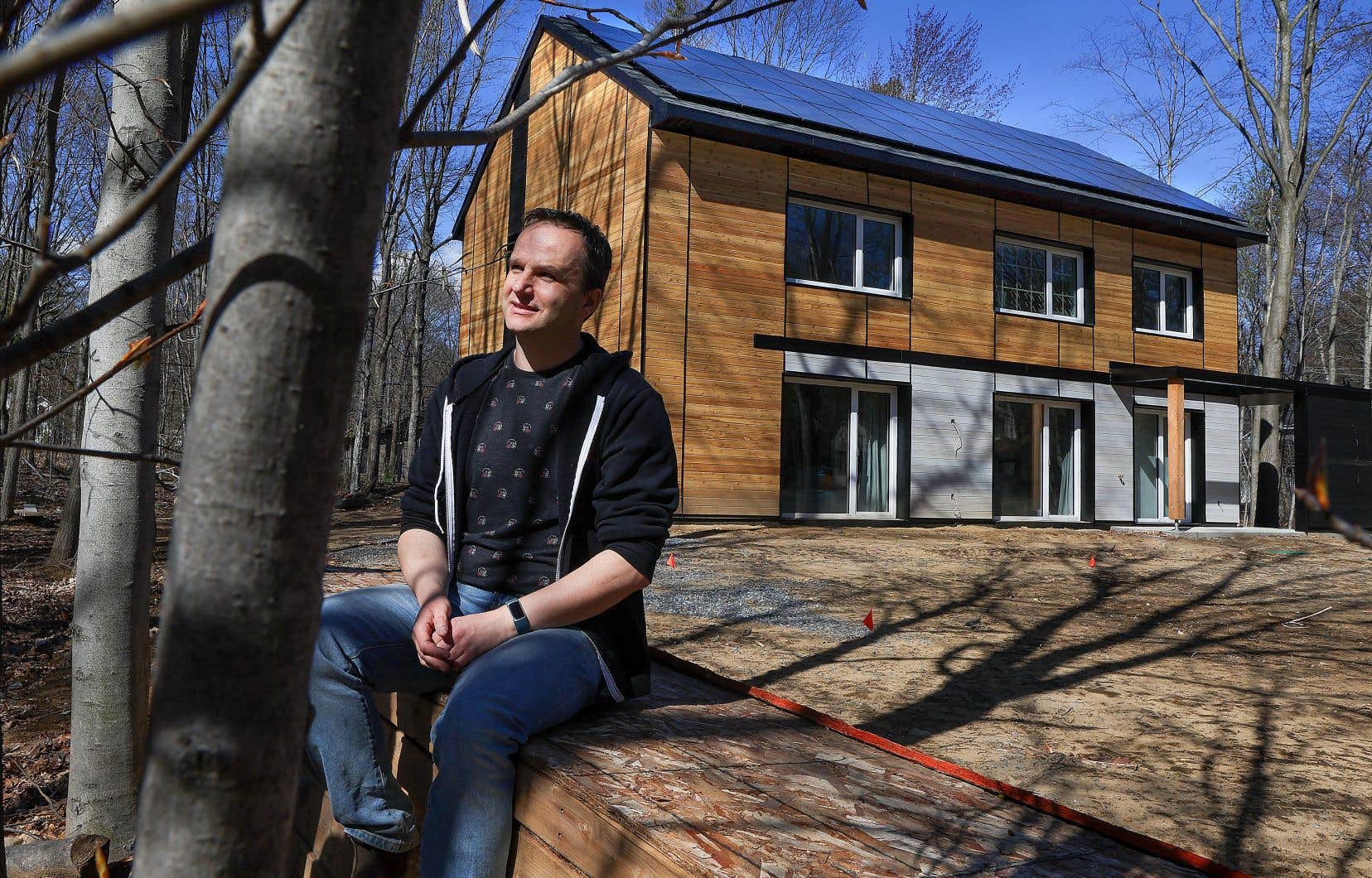The incessant hum of generators echoed through Artur Pawlak’s neighborhood in early April. The south of Quebec had just been sprayed with heavy ice that cut power to more than a million homes. But for this software engineer from Saint-Lazare, the power outage did not pose the slightest problem: his house remained warm and functional thanks to the sunlight.
Mr. Pawlak and his family moved into their brand new “passive house” in February. This type of house originating from Germany, still very rare in Quebec, has exceptionally high-performance insulation. The windows, facing south, allow the rays of the day star to heat the house. In addition, the new owners have topped their passive house with photovoltaic panels.
“Our house doesn’t need much to stay warm” in winter, says Mr Pawlak, who hosts The duty in his home. The recent ice storm is a great example of the “peace of mind” that passive houses provide to their occupants, he points out. Even in the dead of winter, this 2,000 square foot home can stay warm simply because of the “passive” solar heating that enters through the windows.
“We moved here a week before it was -30°C,” he says. We just had a little space heater plugged into an outlet, and that was enough to keep the whole house warm. Even without this heater, the temperature would not have dropped below 18°C or 19°C. »
Seen from the outside, the house is nothing very striking. Large windows face south. Radiant energy enters the house, is trapped there, and heats a concrete slab on the floor. This is based on styrofoam panels: heat exchange with the ground is negligible. During the night, the concrete slab releases the energy stored during the day.
The walls, about 45 centimeters thick, are made of two independent cellulose-based insulating layers. The windows, with triple glazing, also offer excellent insulation. During the design, one seeks to minimize the number of “thermal bridges”, that is to say of transverse elements which easily conduct heat through the envelope of the building.
Of course, the house is also extremely tight. When Mr. Pawlak opens a door, a sucking noise similar to that of a refrigerator is heard. To qualify as a passive house, a building must experience less than 0.6 air changes per hour (ACH) during a blower door test at 50 pascals. That of this resident of Saint-Lazare claims a water resistance of only 0.245 CAH: tens of times less than an old, inefficient house…
Insulation and airtightness of the house greatly reduce heating needs, but also air conditioning. An air-to-air heat pump effective down to -30°C (which was not yet installed in February) regulates the temperature, summer and winter alike. In addition, the mechanical ventilation system is coupled to an energy exchanger which exchanges heat between the incoming air and the outgoing air.
A “climate refuge”
On the side of the house, a garage houses bicycles and skateboards, but also a small machine room. A digital meter indicates the power currently supplied by the photovoltaic panels on the roof: 6 kilowatts (kW). The sun is shining beautifully, but, at the end of the afternoon, it is already lowering in the sky. The panels can generate 14 kW in the best conditions, in the summer — enough to run all the appliances in the house, which is nevertheless connected to the Hydro-Québec network.
To push the energy autonomy even further, Mr. Pawlak had installed three electric batteries totaling 15 kilowatt hours (kWh) of storage. They meet the needs of the household in the evening, when the sun has set. During the blackout, these batteries offered the occupants a little more leeway. They only had to unplug the water heater and the stove.
Our house doesn’t need much to keep warm
And the price of the house? At the start of the project, the new owners expected to pay 30% more than an equivalent conventional house. In the end, the overcharge amounted to more like 60%. They know that, given Quebec’s very affordable electricity rates, it will be very difficult to make such an investment profitable, but they don’t regret it.
They believe that their new home represents a way of “taking action” to fight against climate change. First, the electricity they do not consume can meet other needs. Second, they believe that this house – which they want to live in until their old age, before leaving it to their children – could become a kind of “climate refuge” that will protect them from heat waves and extreme weather events.
“If you look into the future, it’s an insurance policy to have a house that manages the climate a little better, a house that’s more self-sufficient,” says Pawlak. Moreover, “it doesn’t make sense” to pay for electricity or natural gas to heat your home, when you know that the majority of the heat goes quickly outside, he argues.
More and more Quebecers are interested in next-generation resilient homes. “We receive a lot of requests, especially since the last outage,” says Maxime Morency, vice-president of Quebec Solar, the company that accompanied Mr. Pawlak in the photovoltaic component of his project. A small hybrid system (5 kW power, 5 kWh battery) costs around $30,000, he says.
“Every week, interested people contact us to obtain quotes for passive or low-energy houses,” said Genel Severeyn, founder of Maison Bioclimat, the company that developed M’s residential project. .Pawlak. Passive houses in Quebec can aim for German (Passivhaus Institut) or American (Phius) certification. The Saint-Lazare house is not certified, but meets all the requirements, assures Mr. Severeyn.
